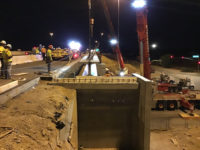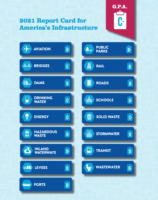Infrastructure Facing $1.1-Trillion Funding Gap in 2020, ASCE Says
The investment shortfall in U.S. infrastructure could total $1.1 trillion in 2020 and may reach $4.7 trillion in 2040, according to a new report by the American Society of Civil Engineers.
The report, released on Jan. 15, concludes that if shortfalls hit those levels, the economy could suffer significantly in the coming years, and have negative effects on businesses and households.
The report, “Failure to Act: The Impact of Current Infrastructure Investment on America's Economic Growth,” is the fifth and final one in a series of ASCE studies examining infrastructure investment.
“Deteriorating infrastructure has a cascading impact on our nation’s economy, negatively affecting business productivity, gross domestic product, employment, personal income and international competitiveness,” says Gregory DiLoreto, ASCE president.
Based on anticipated future funding and infrastructure demands, the report suggests that, in 2020, the funding gap could hit $846 billion in the surface-transportation sector, $39 billion in airports, $107 billion in electric infrastructure, $84 billion in the drinking-water and wastewater sector and $16 billion in seaports and waterways.
DiLoreto says that making one category a priority over another would not solve the problem. “It’s almost impossible to fully separate the sectors,” he adds. “The cumulative impact of failing to invest over time and the interaction between modes, ensures that deficiencies in one sector will have an impact on other sectors. We need to invest across the board.”
The report, produced by Economic Development Research Group, Boston, forewarns that, unless an additional $157 billion per year is invested in infrastructure, the cumulative impact in 2020 could result in a $3.1-trillion loss in GDP, a $1.1-trillion loss in trade, a $2.4-trillion drop in consumer spending, 3.5 million lost jobs and a $3,100 annual decline in personal disposable household income.
ASCE is slated to release its 2013 Report Card for America’s Infrastructure on March 19.




